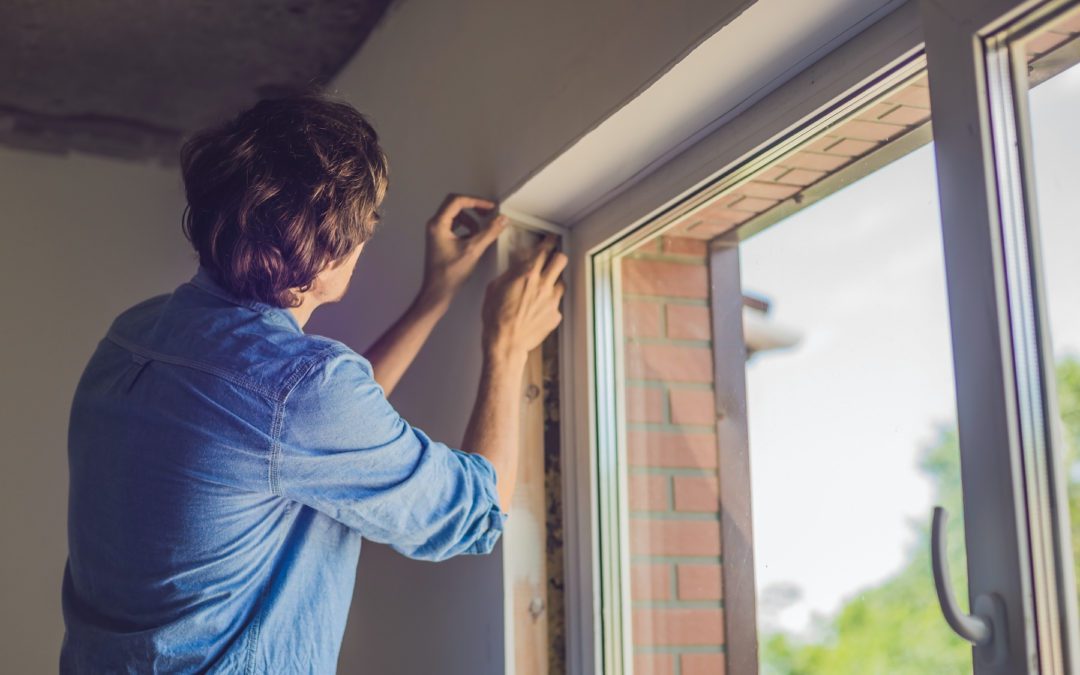Insulate Your Drafty Windows (When New Ones Aren’t in the Budget): Massachusetts Homebuyers Homeownership
Stop us if this sounds familiar: Your thermostat is hiked up to 74 degrees, you’re covered in blankets, you’ve donned your fuzziest socks and your house still feels cold. The likely culprit: Drafty windows. Whether they’re old as dirt or just not energy efficient, windows that let in cold air not only bring down your home’s temperature but also raise your heating bills because your furnace is working overtime.
First, take your windows’ temperature
Do you even have drafty windows? Before you get industrious by sealing cracks, you’ll want to figure out just how cold it is near the window. If you own one of the infrared thermometers we’ve become so familiar with during the coronavirus pandemic, you might be able to get a decent temperature reading and detect cold air leaking in from old windows. “What these instruments do is capture what the eye cannot see, and that could be the radiant heat around the object,” says Matt Swann, a general contractor and president at Brawn Construction. “They can also help detect air leaks by measuring the ambient temperature in an area where cold air is leaking in.”
You can also look for visible cracks and gaps around the window frame, or try the old school trick of shutting your window on a dollar bill. If you can pull the bill out easily, you have drafty windows. If your bank account is a little lean these days, then replacement windows are probably out of the question. So you have two options: You could keep layering on socks and sweaters, or you could make your windows a lot more energy efficient by trying these tips from the pros.
1. Caulk carefully
Caulking is good for sealing cracks, gaps, and joints less than a quarter of an inch. On the inside, keep bitter drafts out by caulking between the interior window trim and the wall. You can also apply caulk to the exterior perimeter of the window. Just be sure not to caulk weep holes, the small rectangular holes found on the bottom of the exterior side of the window frame. “Caulking over weep holes is a big mistake,” warns Kevin Busch, vice president of operations at Mr. Handyman, a Neighborly Company. “Weep holes allow moisture to escape the window frame. Clogged weep holes can’t do their job properly, and your windows can rot, collect mold, or rust.”
Also avoid caulking the moving parts of the window and the ledge above the window frame, Busch says. Click here for complete instructions and tips for applying caulk. Do note that the caulk aisle is massive. Be sure to read the labels, and buy caulk that is explicitly labeled for windows. Be sure to purchase exterior caulk for around the window outside, and interior caulk for inside. There are also caulks for humid spaces and masonry uses.
2. Weatherstrip for a temporary fix
When it comes to winter home maintenance, weatherstripping is a cheap and effective way to dodge bone chilling drafts. Unlike caulk, which lasts around five years, weatherstripping is easy to apply and remove. It comes in a variety of materials and thicknesses and is used on doors, too. Foam weatherstripping is good for the top and bottom of window sashes, and tension seal (or V strip) is ideal for the side of sliding and double hung windows.
The trick is to seal the gap without layering it on too thick. Apply weatherstripping to the sash and frame. Make sure you can still open and close the windows with the weatherstripping in place. Find more information on choosing the right weatherstripping and instructions here.
3. Seal your windows with plastic
Maybe the idea of covering your window with shrink-to-fit plastic wrap seems a bit tacky, but when done correctly, it provides an airtight seal and is virtually invisible. Not only does it help your house feel warmer, but it also reduces moisture buildup on the window due to condensation. It’s an easy DIY project, especially if you have a partner to help with larger windows. In a nutshell, you’re securing the shrink plastic by placing an adhesive strip around the perimeter of the window, on the window frame.
This stops air leaks that may be sneaking through. Once the plastic is in place, use a hairdryer to shrink and tighten the seal for a snug fit. Be sure to measure your windows before heading to the store because the kits come in many sizes. Click here to learn more on how to do this, but follow the manufacturer’s specific directions on the box kit.
4. Hang thermal drapes
Thermal drapes are more stylish today than the drab ones our parents had, and, according to the EPA, pulling thermal drapes over your windows can reduce heat loss by around 25 percent. If you still feel chilly, install a cornice at the top of the drapes. Then to better block those bitter drafts, make sure the drapes overlap in the center. Then use Velcro or magnetic tape to attach the sides of the drapes to the wall and bottom. An interior decorator may not approve, but it’s a good option especially for windows that don’t let in warm sunshine during the day.
5. Install cellular shades
You can reduce heat loss by as much as 40 percent when you install cellular shades (also known as honeycomb shades), according to the EPA. They can be pricey but, according to Swann, they’re considered one of the best ways to insulate your windows. “They significantly reduce the temperature that transfers between the window and the room by creating a barrier through its hexagonal pocket shapes,” says Swann.
The price ranges from $30 to $200 depending on the size of your window and if you want a more deluxe version. If you’re fighting COVID-19 cabin fever or just want to connect with the outside world, you might want to spring for the top-down, bottom-up variety.
6. Install storm window inserts
Storm window inserts are clear inserts that look just like a traditional window but are installed inside the window jamb, and over older, single-pane windows to reduce heat loss. They’re light and easy to install and require no nails or screws. Just snap them in place, and your rooms will feel significantly warmer in the winter. Once the weather warms up, pop them back out and store. Depending on the size, they run about $200 per window. That’s still a good alternative if new energy-efficient windows aren’t in the budget. Look for Energy Star–certified (low-e) inserts, and you could save $350 on your annual heating bill, the EPA says.
The post 6 Ways To Insulate Your Drafty Windows (When New Ones Aren’t in the Budget) appeared first on Real Estate News & Insights | realtor.com®.
First Time Home Buying in Massachusetts
 MABA Buyer Agents help first time home buyers reduce the stress and frustration normally associated with buying a home or condo – especially for first time home buyers.
MABA Buyer Agents help first time home buyers reduce the stress and frustration normally associated with buying a home or condo – especially for first time home buyers.
As a first time homebuyer in Massachusetts, you can turn to our non-profit organization to help you understand and navigate the complexities of the entire Massachusetts real estate transaction, from mortgage pre-approval until you are handed the keys to your new home or condominium. Each of our member buyer's brokers and agents works only for their buyer-clients and never for the seller of the home or condo that their buyers want to buy.
MABA Buyer Agents will take the time to learn about you and your real estate goals, help you understand your options, including first time home buyer programs, properties and/or condominium associations, estimate real property values and put together a negotiating strategy to help you increase the odds of getting your offer accepted in our competitive Massachusetts real estate market. After advocating to get your offer accepted, your MABA buyer's agent will be there for you at your home inspection and help you protect your deposit through the inspection, purchase & sale and financing contingency periods.
You can buy your first home or condo with confidence knowing that your MABA buyer agent is committed to saving you time and money and helping you make your best home buying decision.
Buyer Agency in Massachusetts Explained in this must see video:
"Thanks to our MABA agent's knowledge, analysis, and guidance, when we found our house, we knew it was the house for us. During the negotiation, we felt confident and secure."
Article From: "Lisa Marie Conklin" Read full article
Get Started with MABA
For no extra cost, let a MABA buyer agent protect your interests








